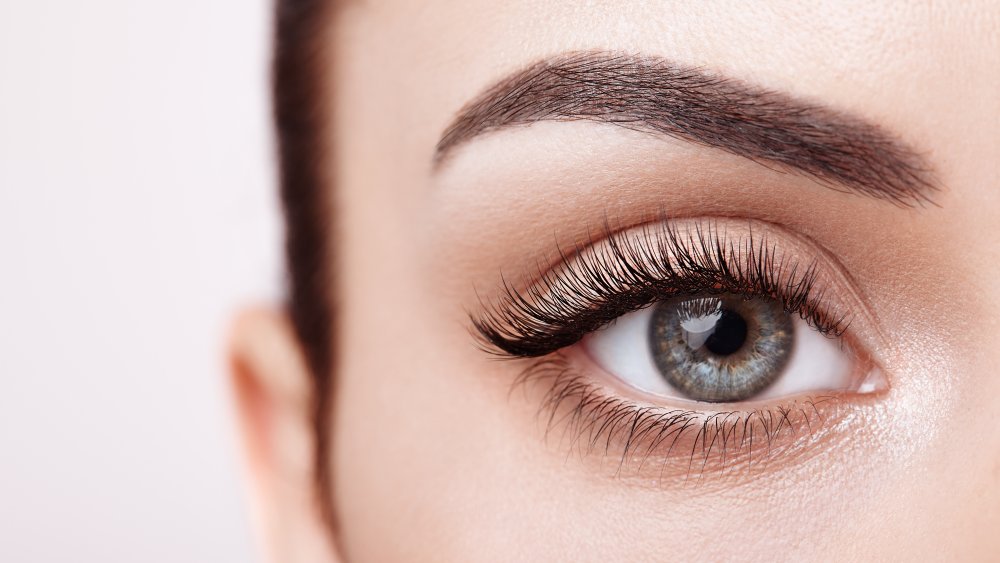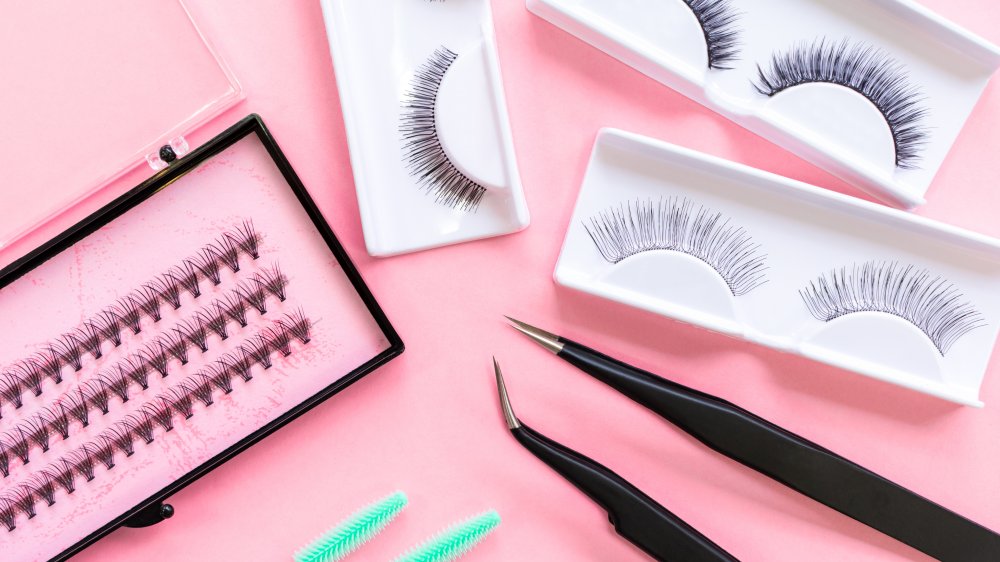The Truth About Eyelash Lice
In late 2019, ABC 7 News reported that there was an increase in the presence of "lash lice" in those who wear eyelash extensions. The news outlet said the main reason was lack of eyelash extension hygiene, which can lead to a build-up of bacteria where the critters can make themselves at home.
Everyone is (likely) familiar with head lice, which makes this headline even more alarming. As Sydney based doctor Sam Hay explained to Whimn, "Lice are little wingless parasites that live on the human body. They've got strong claws that enable them to grip onto hairs, while they use their mouthparts to pierce the skin and feed off our blood." He continued, "Their saliva is what causes all the itch. They can live for up to 10 days if they become detached from our body, which means you can get easily re-infected from clothes and bed linen."
However, it's important to note that what we're talking about here are not actually lice — they are instead a parasite called Demodex and are more of a mite instead of a louse.
Good hygiene is crucial to prevent lash infestations
The Indian Journal of Dermatology describes Demodex as tiny parasites that commonly live on the human body. According to Women's Health, it's likely you already have mites hanging out on your lashes right now. In other words, they can affect anyone — not just those with eyelash extensions — and they're generally not an issue unless there you have an absolute ton on board.
If you do have extensions, it's vital to clean them on a regular basis to prevent excess mite buildup. It can be intimidating to clean them, though. "Generally, the idea when you have eyelash extensions is that people are afraid to touch them or wash them because they're afraid the eyelash will fall out," Dr. Sarah Malik revealed to ABC 7 News. She suggests a diluted tea tree oil solution to help keep your eyelash mite population in check, and also give your eyes a break from extensions every so often.
But how do you know if you have mites? Women's Health lists symptoms such as red, itchy, and irritated eyes that water more than usual. Whether it's eyelash mites or not, if you are experiencing these symptoms, it's best you see a doctor or dermatologist immediately.

